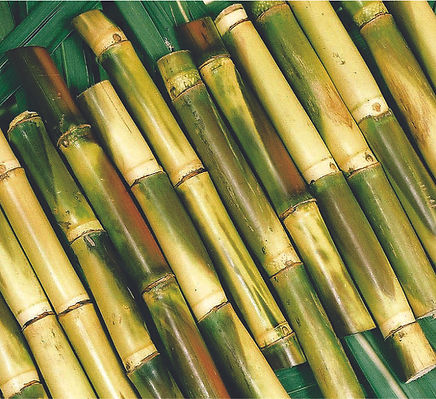

TREE IDENTIFICATION

Deciduous means "falling off at maturity" or "tending to fall off", and it is typically used in order to refer to trees or shrubs that lose their leaves seasonally (most commonly during autumn) and to the shedding of other plant structures such as petals after flowering or fruit when ripe. In a more general sense, deciduous means "the dropping of a part that is no longer needed" or "falling away after its purpose is finished". In plants it is the result of natural processes. "Deciduous" has a similar meaning when referring to animal parts, such as deciduous antlers in deer or deciduous teeth, also known as baby teeth, in some mammals (including humans).

Deciduous \ Hardwoods
In botany, an evergreen is a plant that has leaves throughout the year, always green. This contrasts with deciduous plants, which completely lose their foliage during the winter or dry season. There are many different kinds of evergreen plants, both trees and shrubs. Evergreens include:
-
most species of conifers (e.g., hemlock, blue spruce, red cedar, and white/scots/jack pine), but not all (e.g., larch)
-
live oak, holly, and "ancient" gymnosperms such as cycads
-
most angiosperms from frost-free climates, such as eucalypts and rainforest trees
-
clubmosses and relatives
The Latin binomial term sempervirens (literally, "always green") refers to the evergreen nature of the plant, for instance:
Acer sempervirens (a maple)
Cupressus sempervirens (a cypress)
Lonicera sempervirens (a honeysuckle)
Sequoia sempervirens (a sequoia)
Ulmus parvifolia 'Sempervirens' (an elm)
Leaf persistence in evergreen plants varies from a few months (with new leaves constantly being grown as old ones are shed) to several decades (over thirty years in the Great Basin Bristlecone Pine

Evergreens \ Conifers \ softwoods
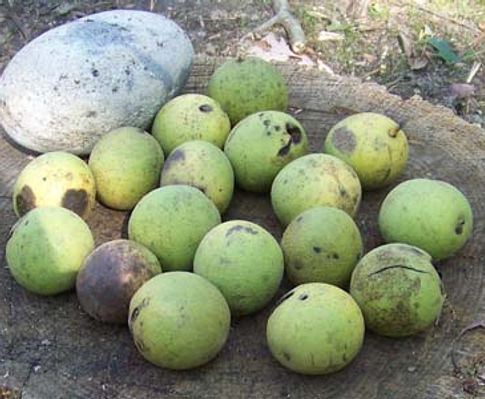
American Black Walnuts
Juglans nigra
Juglans nigra, the eastern black walnut, a species of flowering tree in the walnut family, Juglandaceae, is native to eastern North America. It grows mostly in riparian zones, from southern Ontario, west to southeast South Dakota, south to Georgia, northern Florida and southwest to central Texas. Wild trees in the upper Ottawa Valley may be an isolated native population or may have derived from planted trees.
The black walnut is a large deciduous tree attaining heights of 30–40 m (98–131 ft). Under forest competition, it develops a tall, clear trunk; the open-grown form has a short trunk and broad crown. The bark is grey-black and deeply furrowed. The pith of the twigs contains air spaces. The leaves are alternate, 30–60 cm long, odd-pinnate with 15–23 leaflets, with the largest leaflets located in the center, 7–10 cm long and 2–3 cm broad. The male flowers are in drooping catkins 8–10 cm long, the female flowers are terminal, in clusters of two to five, ripening during the autumn into a fruit (nut) with a brownish-green, semifleshy husk and a brown, corrugated nut. The whole fruit, including the husk, falls in October; the seed is relatively small and very hard. The tree tends to crop more heavily in alternate years. Fruiting may begin when the tree is 4–6 years old, however large crops take 20 years. Total lifespan of J. nigra is about 130 years. Black Walnut does not leaf out until late spring when the soil has warmed and all frost danger is past. Like other trees of the Fagales order (oaks, hickories, chestnuts, birches, etc.), it has monoecious wind-pollinated catkins. The flowers comprise separate males and females, which do not appear on the same plant at once in order to prevent self-pollination and inbreeding. Thus, two trees are required to produce a seed crop and Black Walnut readily hybridizes with other members of the Juglans genus.
While its primary native region is the Midwest and east-central United States, the black walnut was introduced into Europe in 1629. It is cultivated there and in North America as a forest tree for its high-quality wood. Black walnut is more resistant to frost than the English or Persian walnut, but thrives best in the warmer regions of fertile, lowland soils with high water tables. Black walnut is primarily a pioneer species similar to red and silver maple and black cherry. It will grow in closed forests, but needs full sun for optimal growth and nut production. Because of this, black walnut is a common weed tree found along roadsides, fields, and forest edges in the eastern US.

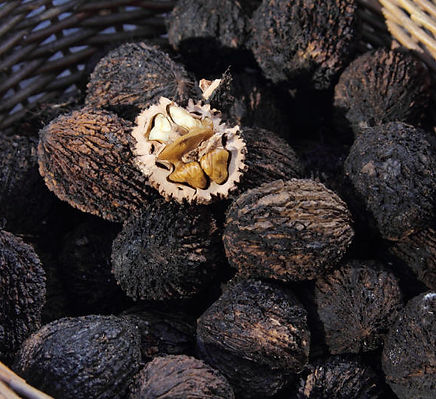
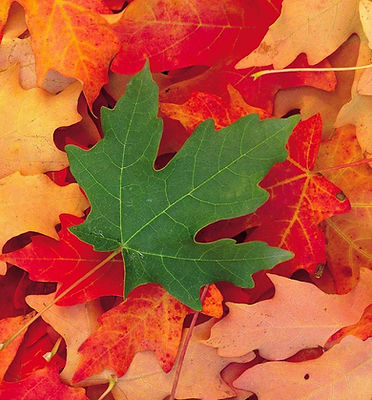
Sugar Maples
Outstanding Fall Color and Sweet Maple Syrup
Sugar Maples are a deciduous tree known for their brilliant fall colors and sap that is the primary source for maple syrup. Plant a row of them along your street, or just one to provide shade and fall interest in your front yard.
The Sugar Maple is best known for its spectacular fall beauty. Imagine flaming crimson, vivid orange and brilliant yellow displayed on your Sugar Maple all at the same time. The effect of the variety of changing colors will dazzle you and your neighbors. It is one of the most remarkable fall displays of color you will see in your neighborhood.
Sugar Maples are one of the most incredible landscape trees available for several reasons. They grow straight and true with a rounded crown that’s not only attractive for your yard but perfect for supplying a little shade on a summer day.
They can grow up to 100 feet, depending upon the conditions. Unlike a lot of trees, your Maple will do well even in the shade of other trees in your yard, and it won’t mind heat or drought. It’s adaptable to many conditions.
One of the most remarkable assets of your Sugar Maple is its sap. Sweeter than the sap of other Maples, the Sugar Maple sap produces syrup that is less cloudy and of higher quality. It’s so easy to drain off some sap and boil it down that you’ll be giving samples of your syrup to friends and family in no time.
Sugar Maples are also prized for their wood. It’s very hard and dense, making a good choice for everything from furniture to flooring.

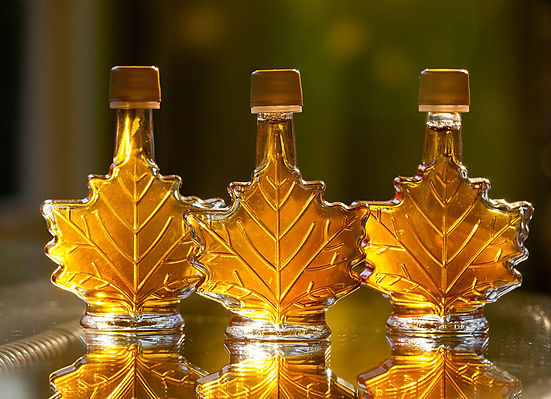


TREES OF LIFE HARVEST

American OakS
An oak is a tree or shrub in the genus Quercus (/ˈkwɜrkəs/;Latin "oak tree") of the beech family, Fagaceae. There are approximately 600 extant species of oaks. The common name "oak" may also appear in the names ofspecies in related genera, notably Lithocarpus. The genus is native to the Northern Hemisphere, and includes deciduous and evergreen species extending from cool temperate to tropical latitudes in the Americas, Asia,Europe, and North Africa. North America contains the largest number of oak species, with approximately 90 occurring in the United States. Mexico has 160 species, of which 109 are endemic. The second greatest center of oak diversity is China, which contains approximately 100 species.
Oaks have spirally arranged leaves, with lobate margins in many species; some have serrated leaves or entire leaves with smooth margins. Many deciduous species are marcescent, not dropping dead leaves until spring. Inspring, a single oak tree produces both male flowers (in the form of catkins) and small female flowers. The fruit is a nut called an acorn, borne in a cup-like structure known as a cupule; each acorn contains one seed (rarely two or three) and takes 6–18 months to mature, depending on species. The live oaks are distinguished for being evergreen, but are not actually a distinct group and instead are dispersed across the genus.
Toxicity
The leaves and acorns of the oak tree are poisonous to cattle, horses, sheep, and goats in large amounts due to the toxin tannic acid, and cause kidney damage and gastroenteritis. Symptoms of poisoning include lack of appetite, depression, constipation, diarrhea (which may contain blood), blood in urine, and colic.
The exception to livestock and oak toxicity is the domestic pig, which may be fed entirely on acorns in the right conditions, and has traditionally been pastured in oak woodlands (such as the Spanish dehesa and the English system of pannage) for hundreds of years.
Acorns are also edible to humans, after leaching of the tannins.

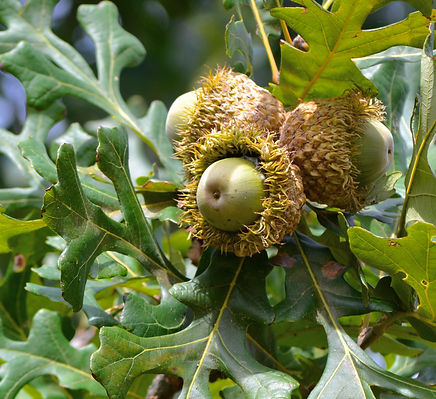

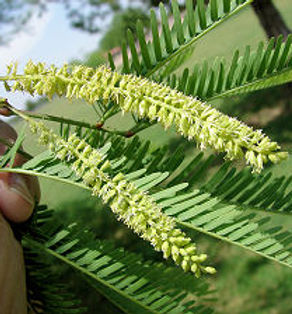
Mesquite
Mesquite is the common name for several species of small trees in the genus Prosopis.
They are native to the southwestern United States and Mexico (except for creeping mesquite, which is invasive in southern California). Mesquite is one of the most expensive types of lumber in the U.S.
A mature tree can be milled and sold for thousands of dollars. It was a very popular type of wood used by early Spaniards to build ships; but is now used most commonly for high end rustic furniture and cabinets.
Scraps and small pieces are used commonly as wood for cooking in southern states; and also brings a premium on the market.
The Tamaulipan mezquital ecoregion, in the deserts and xeric shrublands biome, is located in the southern United States and northeastern Mexico.
It covers an area of 141,500 km2 (54,600 sq mi), encompassing a portion of the Gulf Coastal Plain in southern Texas, northern Tamaulipas, northeastern Coahuila, and part of Nuevo León
This tree blooms from spring to summer.
Honey mesquite has been introduced to parts of Africa, Asia, and Australia and is considered by the World Conservation Union as one of the world's most problematic invasive species.

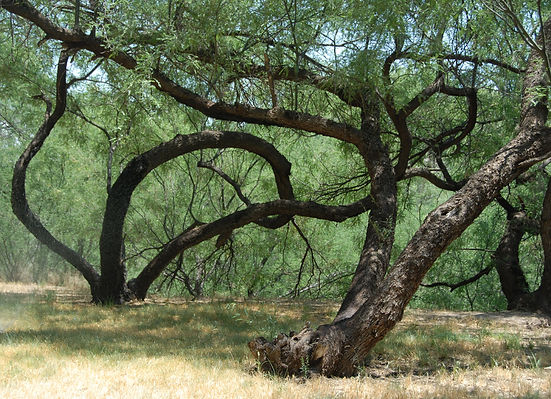
Mesquite beans an excellent wild edible

TREES THAT MAKE FOOD SMOKIN'
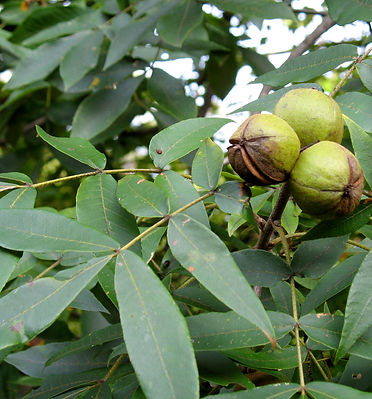
Hickory
Hickory (from Powhatan) is a type of tree, comprising the genus Carya (Ancient Greek: κάρυον "nut").
The genus includes 17–19 species of deciduous trees with pinnately compound leaves and large nuts.
Five or six species are native to China, Indochina, and India (State of Assam), as many as 12 are native to the United States, four are found inMexico, and two to four are from Canada.
Hickory flowers are small, yellow-green catkins produced in spring.
They are wind-pollinated and self-incompatible. The fruit is a globose or oval nut, 2–5 cm (0.79–1.97 in) long and 1.5–3 cm (0.59–1.18 in) diameter, enclosed in a
four-valved husk, which splits open at maturity.
The nut shell is thick and bony in most species, and thin in a few, notably C. illinoinensis; it is divided into two halves, which split apart when the seed germinates.


Harvesting Pignut & Shagbark Hickory Nuts
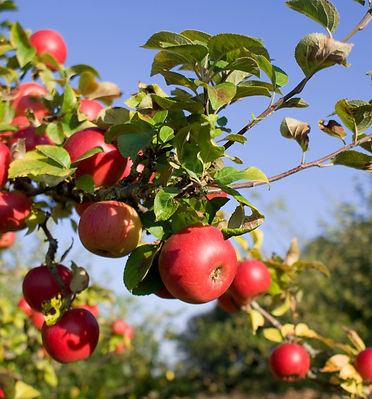
Applewood
Applewood is the wood of an apple tree.
I contend that smoke produced from charcoal will lend a very slight smokiness to food (the old, charcoal tastes better than gas debate), but you need to step up your game if you want real flavor out of your grilling medium.
Grilling with wood is one of the greatest advantages to cooking food over a fire in my book, providing the unique opportunity to add a flavor that just can't be accomplished to the same degree inside a kitchen.
When picking a wood to grill with, you always want a hardwoods—softwoods like pine and cedar create a nasty, sooty smoke that have the potential to be dangerous to your health.
Although each wood has its own unique flavor, without tasting them side-by-side, it's usually too subtle to really distinguish. That's whyit's best to pick wood based on the level of smokiness it will impart, rather than obsessing over the minuteness of flavor. I break smoking woods down to three general categories: mild, medium, and heavy.
MILD WOODS
These include alder and fruitwoods like apple and cherry. The smokiness in these woods tend to be mild, with hints of a fruitiness or sweetness. The mild woods pair best with more delicate meats like chicken and fish, where a little smoke goes a long way.

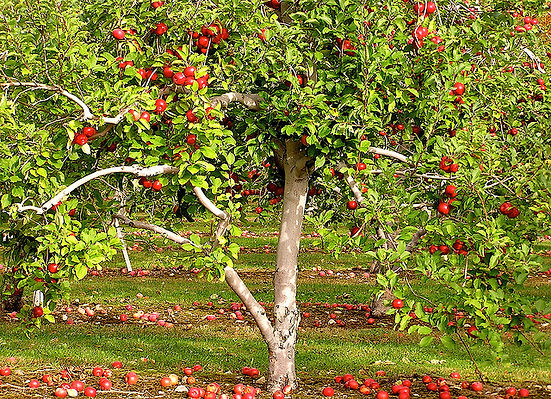
How To Grow Apple Trees


Birch Resources
Birch species are generally small to medium-sized trees or shrubs, mostly of temperate climates.
The simple leaves are alternate, singly or doubly serrate, feather-veined, petiolate and stipulate. They often appear in pairs, but these pairs are really borne on spur-like, two-leaved, lateral branchlets.
The fruit is a small samara, although the wings may be obscure in some species.
They differ from the alders (Alnus, other genus in the family) in that the female catkins are not woody and disintegrate at maturity, falling apart to release the seeds, unlike the woody, cone-like female alder catkins.
The bark of all birches is characteristically marked with long, horizontal lenticels, and often separates into thin, papery plates, especially upon the paper birch.
Its decided color gives the common names gray, white, black, silver and yellow birch to different species.
The buds form early and are full grown by midsummer, all are lateral, no terminal bud is formed; the branch is prolonged by the upper lateral bud.
The wood of all the species is close-grained with satiny texture, and capable of taking a fine polish; its fuel value is fair.


HOW TO MAKE BIRCHBARK OIL!!

22 TREES THAT CAN BE TAPPED FOR SAP AND SYRUP
Biomes: Deciduous Forests

Tree Identification Part One
Tree Identification Part Two:
Using a Field Guide
Eastern Woodland Trees
and their Uses 1
Useful and Medicinal
Trees of the Eastern Woodlands 2
Introduction to Identification and Ecology of Northeastern Conifers

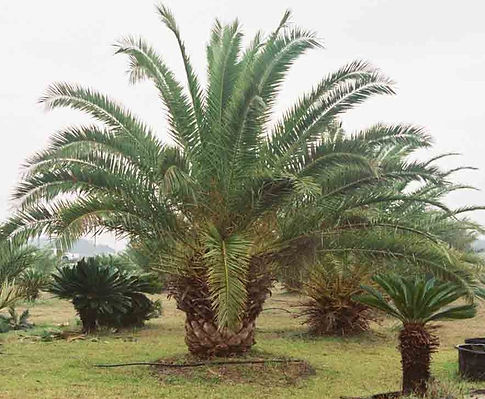
Sabal palmetto
Sabal palmetto is a popular landscape plant known for its tolerance of salt spray and cold. Because of their relatively long establishment period and prevalence on ranchlands, few, if any are grown from seed in nurseries. Instead, established plants are dug in the wild with small rootballs since virtually all the severed roots die and must be replaced by new roots in the new location. Most leaves are removed at this time to reduce transpiration. It is the state tree of South Carolina and Florida. Most references rate the species as hardy to USDA hardiness zone 8a. Cabbage palms have good hurricane resistance, but are frequently overpruned for a variety of reasons.
The growing heart of the new fronds, also known as the terminal bud, gives the tree its "cabbage" name, since this is extracted as a food and tastes like other undifferentiated plant meristem tissue, such as the heart of a cabbage or artichoke. It is one of several palm species that is sometimes used to make heart of palm salad. Heart of palm was commonly eaten by Aboriginal Americans. However, extracting the heart will kill this species of palm, because the terminal bud is the only point from which the palm can grow and without this bud the palm will not be able to replace old leaves and will eventually die.
The cabbage palm is remarkably resistant to fire, floods, coastal conditions, cold, high winds and drought. Despite this, alarming causes of recent mortality include rising sea level (most noticed on the Big Bend Coast of Florida), and Texas phoenix palm decline (TPPD) a phytoplasma currently found on the west coast of Florida.
Sabal palmetto trunks appear in two different conditions, which can be confusing (see photo). When leaves die, the leaf bases typically persist for a while, creating a spiky, "basketweave" effect. These remnant leaf bases are called "bootjacks" or "boots", for short. The name stems from the "Y" shape that was reminiscent of devices used to aid individuals in removing boots. Transplanted palms are sometimes deliberately shorn of these bootjacks. Taller specimens are more likely to have lost their bootjacks and appear relatively smooth and columnar. The loss of bootjacks is a natural, if poorly understood, phenomenon as the palm does not create a leaf abscission zone so the loss of the leaf bases results from some other physical or biological process.

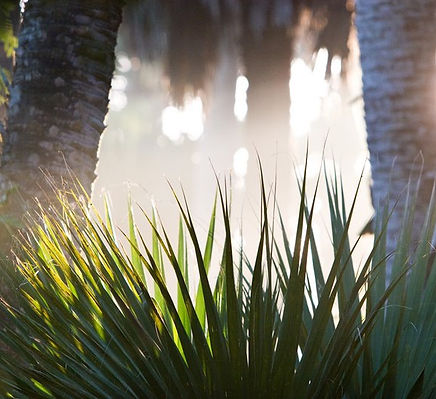
Hearts Of Palm: Swamp Cabbage Stew
Jungle Wild Edibles - Hearts of Palm
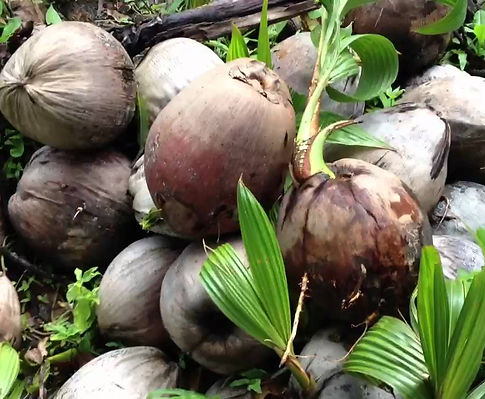


Coconut Sprouts - EAT it, then PLANT it!
DELICIOUS SPROUTED COCONUT

Coconut Palms
The coconut tree (Cocos nucifera) is a member of the family Arecaceae (palm family). It is the only accepted species in the genus Cocos. The term coconut can refer to the entire coconut palm, the seed, or the fruit, which, botanically, is a drupe, not a nut. The spelling cocoanut is an archaic form of the word. The term is derived from the 16th-century Portuguese and Spanish word coco meaning "head" or "skull", from the three indentations on the coconut shell that resemble facial features. The coconut is known for its great versatility as seen in the many uses of its different parts and found throughout the tropics and subtropics. Coconuts are part of the daily diets of many people. Coconuts are different from any other fruits because they contain a large quantity of "water" and when immature they are known as tender-nuts or jelly-nuts and may be harvested for drinking.
When mature, they still contain some water and can be used as seednuts or processed to give oil from the kernel, charcoal from the hard shell and coir from the fibrous husk.
The endosperm is initially in its nuclear phase suspended within the coconut water. As development continues, cellular layers of endosperm deposit along the walls of the coconut, becoming the edible coconut "flesh". When dried, the coconut flesh is called copra. The oil and milk derived from it are commonly used in cooking and frying; coconut oil is also widely used in soaps and cosmetics.
The clear liquid coconut water within is potable. The husks and leaves can be used as material to make a variety of products for furnishing and decorating. The coconut also has cultural and religious significance in many societies that use it.

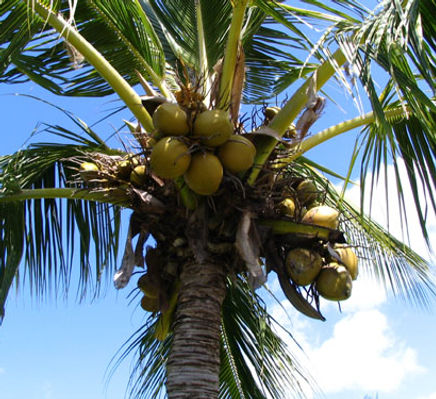
LEARN ABOUT THE STAGES OF THE COCONUT: FROM YOUNG TO MATURE TO SPROUTED
How To Open A Coconut Professionally
Introduction to Conifers:
Pine, Cedar, Spruce and Cypress

TROPICAL TREES AND FOOD

TROPICAL GRASSES AND FOOD

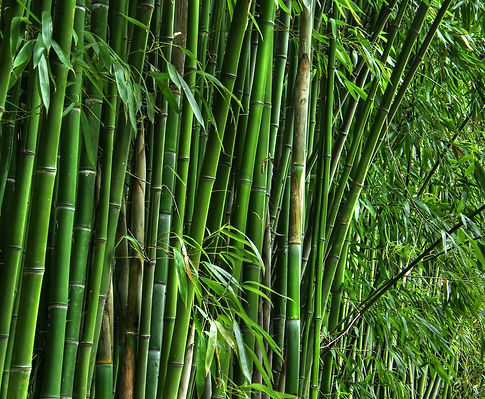
Bamboo
The bamboos i/bæmˈbuː/ are a subfamily (Bambusoideae) of flowering perennial evergreen plants in the grass family Poaceae.
Giant bamboos are the largest members of the grass family. In bamboo, the internodal regions of the stem are usually hollow and the vascular bundles in the cross section are scattered throughout the stem instead of in a cylindrical arrangement.
The dicotyledonous woody xylem is also absent. The absence of secondary growth wood causes the stems of monocots, including the palms and large bamboos, to be columnar rather than tapering.
Bamboos are the fastest-growing plants in the world,[4] due to a unique rhizome-dependent system. Certain species of bamboo can grow 91 cm (3 ft) within a 24-hour period, at a rate of almost 4 cm (1.5 in) an hour (a growth around 1 mm every 90 seconds, or one inch every 40 minutes).
Bamboos are of notable economic and cultural significance in South Asia, Southeast Asia and East Asia, being used for building materials, as a food source, and as a versatile raw product.
Bamboo has a higher compressive strength than wood, brick, or concrete and a tensile strength that rivals steel.
The word bamboo comes from the Kannada term bambu, which was introduced to English through Indonesian and Malay.

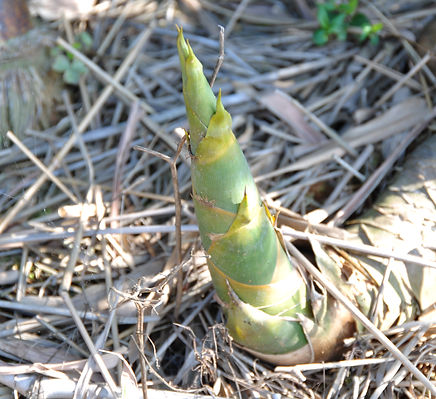
Cooking Bamboo Shoots
Bamboo: The Miracle Plant
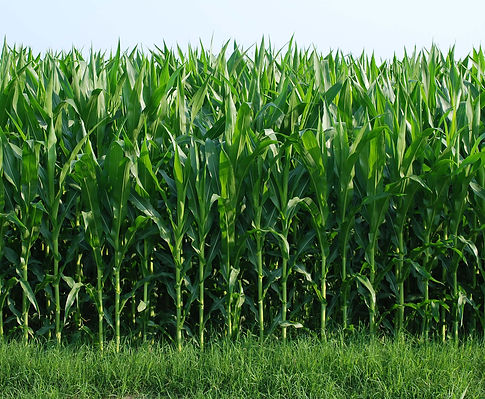
Sugarcane
Sugarcane, or sugar cane, is one of the several species of tall perennial true grasses of the genus Saccharum, tribe Andropogoneae, native to the warm temperate to tropical regions of South Asia, Melanesia, and used for sugar production. It has stout jointed fibrous stalks that are rich in the sugar sucrose, which accumulates in the stalk internodes. The plant is two to six metres (6 to 19 feet) tall. All sugar cane species interbreed and the major commercial cultivars are complex hybrids. Sugarcane belongs to the grass family Poaceae, an economically important seed plant family that includes maize, wheat, rice, and sorghum and many forage crops.
Sucrose, extracted and purified in specialized mill factories, is used as raw material in human food industries or is fermented to produce ethanol. Ethanol is produced on a large scale by the Brazilian sugarcane industry. Sugarcane is the world's largest crop by production quantity. In 2012, The Food and Agriculture Organization of the United Nations (FAO) estimates it was cultivated on about 26.0 million hectares, in more than 90 countries, with a worldwide harvest of 1.83 billion tons. Brazil was the largest producer of sugar cane in the world. The next five major producers, in decreasing amounts of production, were India, China, Thailand, Pakistan and Mexico.
The world demand for sugar is the primary driver of sugarcane agriculture. Cane accounts for 80% of sugar produced; most of the rest is made from sugar beets. Sugarcane predominantly grows in the tropical and subtropical regions (sugar beets grow in colder temperate regions.) Other than sugar, products derived from sugarcane includefalernum, molasses, rum, cachaça (a traditional spirit from Brazil), bagasse and ethanol. In some regions, people use sugarcane reeds to make pens, mats, screens, and thatch. The young unexpanded inflorescence of tebu telor is eaten raw, steamed or toasted, and prepared in various ways in certain island communities of Indonesia.

